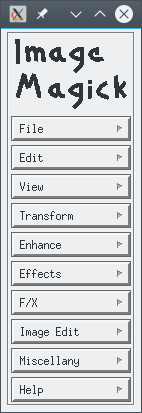

tig is also quite cool for many git interactions (especially partial staging).įor batch jobs you set up and trigger as needed: htop and btop++ are good examples of TUIs for interactive use. Also: Since `:terminal`, working on one-off scripts has become considerably more awesome. Yes, it's obscure to learn, but once you do, boy do you get a lot out of it. You can use it for years and still learn neat things about it. It's also astounding how well OpenSSH integrates into the whole *NIX TTY landscape. sponge and entr just for their genuine usefulness with minimal interface. socat for any kind of network/socket testing stuff. Old enough to be part of the POSIX standard and yet considerably more awesome than almost any other UNIX command. The principle is to type extra syntax to make it more dangerous while still accomplishing the (observable) goal of changing the original files. So something like mogrify could have been designed with hypothetical syntax as "mogrify -nobackups". That's what many other command line tools do including image utilities. Sure, I understand that but many other destructive tools will have safety UI features such as creating ".bak" backup files. Usually, a command line utility with less options specified is relatively "safe" and you have to add extra syntax to make it "unsafe".ĮDIT reply to: >The whole reason for mogrify's existence is that it overwrites the original image file. In decades of computer use, that is the only command line tool that tricked me into destroying my data because I didn't realize it works differently from all the other tools I use that don't do that. With the knowledge from this article, you should now be able to crop images using command-line tools only.By default (without specifying extra command-line options) it overwrites the input files.

This can be very useful for automating tasks or working on systems without a graphical interface. ImageMagick is a powerful tool that allows you to manipulate images directly from the command line. It then calculates the size of the crop rectangle and its offset, and uses the convert command to crop the image. This script takes five arguments: the image file path, and the number of pixels to crop from the left, right, top, and bottom. H = str(size - int(top) - int(bottom))Ĭmd = Img_out = img_base + "" + extensionĭata = subprocess.check_output().decode("utf-8").strip().replace(img, "") Here is an example of a Python script that uses ImageMagick to crop an image: #!/usr/bin/env python3 Using a Python Scriptįor more complex tasks, you might want to use a script. The parameters are the same as the convert command. The syntax for the command is as follows: mogrify -crop WxH+X+Y input.jpg The mogrify command is similar to the convert command, but it modifies the original image file instead of creating a new one.
#Imagemagic mogrify leaving tilde files install#
For Ubuntu, you can use the following command: sudo apt-get install imagemagickįor other distributions or operating systems, you can refer to the official ImageMagick installation instructions. You can install it using the package manager of your Linux distribution. Installing ImageMagickīefore we start cropping images, we need to ensure that ImageMagick is installed on our system.

#Imagemagic mogrify leaving tilde files how to#
In this article, we will focus on how to use ImageMagick to crop images. It can crop, resize, rotate, apply various effects, and do much more. ImageMagick is a robust collection of tools and libraries to read, write, and manipulate an image in any of the more popular image formats.


 0 kommentar(er)
0 kommentar(er)
